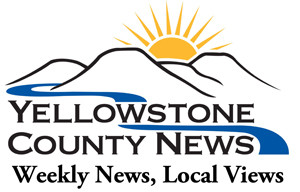by Evelyn Pyburn
BILLINGS – The boards of Big Sky Economic Development (BSED) approved committing up to $300,000 for the next step of  funding needed for One Big Sky District (OBSD), last week. It will be part of $578,000 being requested from the community by Bob Dunn of Landmark, the private company that is spearheading OBSD, a project that includes the development of a downtown convention center.
funding needed for One Big Sky District (OBSD), last week. It will be part of $578,000 being requested from the community by Bob Dunn of Landmark, the private company that is spearheading OBSD, a project that includes the development of a downtown convention center.
BSED Director Steve Arveschoug explained that the funds are what are expected to be needed for the next six months, primarily for the purpose of lobbying the state legislature to pass a bill, that will create a funding mechanism for the grand $2.5 billion project, and to pursue site analysis. Arveschoug said that passing the legislation is necessary to make the plan “actionable.” Click to read more on OBSD The proposed legislation would create a new program or “finance tool”, which Arveschoug says could be used by any community in Montana.
Dunn’s request is being directed to BSED and other community organizations, which formed the partnership which funded the planning stage of OBSD. Landmark would contribute an additional $780,000 to $1.1 million for the same purposes, during the same period. Arveschoug recommended that BSED contribute the $300,000 from its Opportunity Fund, to be payable monthly, as needed. Arveschoug said he didn’t know if all of the $300,000 would be necessary. It depends on what happens at the State Legislature, he said.
Other community partners would pay the balance of the $578,000. The partners include the Billings Chamber of Commerce, Downtown Billings Partnership, Billings Tourism Business Improvement District and the City of Billings, as well as other private contributors.
Whether BSED should be using public funds to lobby the state legislature was questioned by County Commissioner John Ostlund, who said, “I am concerned that EDA is going to be spending thousands in tax funds to lobby the State Legislature for millions to fund an event center that will compete with another entity that is funded by taxpayers.” (BSED’s joint boards are the Economic Development Authority and the Economic Development Corporation both of which are county government entities supported in part by tax dollars.)
During a regular discussion meeting of county officials, a week earlier, before Yellowstone County Commissioners, the issue of competing public facilities was raised by a citizen who asked if the community is going to build a new public- funded facility to compete with Metra Park. Ray Massie, Metra Park’s Director of Marketing, said that Metra Park would be at risk of losing between $600,000 and $700,000, annually, in events that could be held in the kind of facility that is being planned for the convention center.
Arveschoug replied that that would not necessarily be true, and part of their due diligence is to analyze the economic
impacts of a convention center on other local venues. He said they would present the results of their study to the County Commissioners on January 17 (2 pm, Stillwater Building).
County Commissioner Don Jones, who serves as an ad-hoc member of the EDA board, said that he would wait until that presentation to determine his support. “That’s a lot of money to lobby in Helena. Are you going to hire a lobbyist?”
“Yes,” replied Arveschoug, who also pointed out that he and other staff members have spent a lot of time working on this issue. About lobbying with public funds, Arveschoug said that they had consulted with their attorney who said they could do so.
The next funding stage will support the lobbying effort and some design. Listed as needs are presentation materials, conceptual design and baseline models. ($102,000 for presentation materials diligence and site evaluation/acquisition; $140,000 more fiscal analysis; $298,000 for legislation presentations; and $38,000 for travel and expenses for a consultant team to further assist in lobbying efforts).
Following a meeting in Helena with the Yellowstone legislative delegation, Arveschoug said Billings area Legislative representatives approved, by an 11-1 vote, to place the proposed OBSD bill on their priority list of legislation. A draft of the bill is now available and being reviewed and will soon be introduced in the legislature by Sen. Roger Webb. Arveschoug said that they have also made a presentation on OBSD to the Montana Chamber of Commerce.
On Jan. 22 and 23, BSED will join Dunn and others for another visit to the Capital to talk with State legislators.
Referred to as Phase 2, the planning document will be presented to the Billings City Council on January 28. The massive plan, that covers most of downtown Billings, is aimed at directing future development and economic growth over the next thirty years. It projects a number of possible developments that include a convention center and hotel, for the purpose of boosting tourism by enticing conferences and conventions, as well as adding appeal to Billings that promoters believe will attract young people and a labor force. The structure “would take up two city blocks — one for convention space and another for parking and mixed use.”
The plan presents phases of development, which include a convention center that would serve as a venue for regional events such as sports or concerts or other entertainment, as well as conferences and conventions. It would also include retail and residential development in the downtown “entertainment / lifestyle” area, retail and health and wellness services along North 27th that would augment the medical corridor and a melding of the medical corridor with the education potential of MSU-Billings.
BSED held a public meeting on Friday, Jan. 4, to update the community on the project’s progress and to answer questions. Citizens posed a broad range of questions and suggestions regarding its location, impact on other aspects of the community, prospects for low income housing, parking limitations, but most especially about its financing.
They asked for greater explanation about how the financing will work. Broad overviews show that in phases, over a thirty year period, it is projected that $2.5 billion in total financing will occur, with the local and state government expected to contribute on average about 25 percent, under what is called a “value capture” mechanism that would be created under the proposed legislation. The public “investment” is not being viewed as an investment in a private venture but as reimbursements to the private company for developing “civic assets,” such as parking or perhaps a new city hall, as has been frequently mentioned. The reimbursement would essentially be a return to the investors of Landmark of the property taxes paid on the project as it is developed.
The first three years, a private investment of $300 million is projected with no public dollars committed to the project during the first two years. In year three, the city would be asked to contribute $75 million and the state $75 million. By the end of the first ten years private investment is projected to reach $1 billion with the public sectors having contributed $350 million.
Phase 2 was paid for in part by Landmark and partially by a coalition of Billings organizations and governmental entities. Landmark paid $1.3 million, which was augmented by $98,850 in private contributions, $100,000 from the City of Billings, $50,000 from Big Sky Economic Development, $15,000 by the Billings Chamber of Commerce, $15,000 by the Billings Tourism Business Improvement District (TBID), and from the Downtown Billings Partnership $400,000 – for a total $678,850.
The Downtown Billings Partnership donation was funded through a loan or line- of- credit from BSED secured by a building the City of Billings purchased for $800,000 for the original One Big Sky proposal.
During a BSED executive committee meeting, prior to the joint meeting of the boards, it was asked “what if the legislation fails?” Is there a Plan B?
Arveschoug replied that Dunn would say there is no Plan B. “That should probably be our attitude during the lobbying for legislation,” said Arveschoug, but added that he believes they need to have a plan on “How do we recover?’
“If we have done nothing else, we have shown the community we have a great economic opportunity,” he said. The city will still have a long-term plan that will be valuable in the future development of the city.
“What we need is to find another means of financing a project, through TIFs or other ways to do it,’ he said. “We can push and cajole the community toward these projects to be more competitive regionally.”

